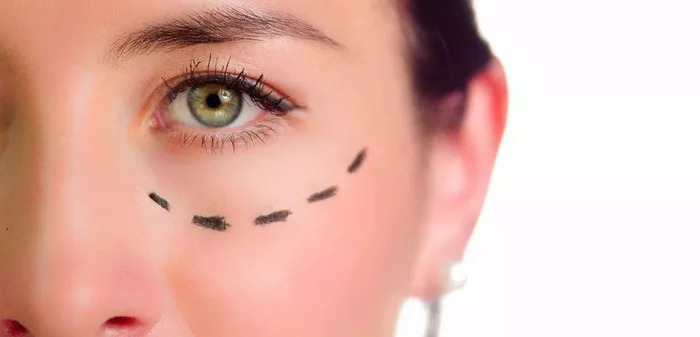Lower eyelid surgery, also known as lower blepharoplasty, is a cosmetic procedure designed to address various aesthetic concerns and signs of aging in the lower eyelid area. This surgical intervention can help rejuvenate the appearance of the eyes by removing excess skin, reducing puffiness, and improving the overall contour of the lower eyelids. In this article, we will explore what lower eyelid surgery entails, its benefits, and the factors to consider before undergoing the procedure.
Understanding Lower Eyelid Surgery
Lower eyelid surgery aims to correct the following issues:
Puffy or Baggy Lower Eyelids: Aging, genetics, and lifestyle factors can lead to the accumulation of fat and fluid in the lower eyelids, resulting in a swollen or puffy appearance.
Excess Skin: Over time, the skin of the lower eyelids can lose elasticity, becoming lax and creating wrinkles or folds.
Under Eye Hollows: Some individuals develop hollow areas or depressions under their eyes, which can contribute to a tired or aged appearance.
Lower eyelid surgery is typically performed as an outpatient procedure under local anesthesia with sedation or general anesthesia. The specific technique used may vary depending on the patient’s unique concerns and the surgeon’s preferred approach. However, the procedure commonly involves the following steps:
Incisions: The surgeon creates incisions along the natural crease just below the lower lash line or on the inside of the eyelid (transconjunctival approach). These incisions are strategically placed to minimize visible scarring.
Fat Repositioning or Removal: If necessary, the surgeon may reposition or remove excess fat deposits to achieve a more balanced and youthful contour. In some cases, fat grafting may be used to address under eye hollows.
Muscle and Tissue Tightening: The underlying muscles and tissues are tightened and repositioned to enhance the overall appearance and provide long-lasting results.
Skin Redraping: The skin is carefully redraped and excess skin is trimmed, resulting in a smoother and tighter lower eyelid area.
Closure: The incisions are meticulously closed with sutures or other techniques, ensuring minimal scarring.
Benefits of Lower Eyelid Surgery
Lower eyelid surgery offers several benefits for individuals seeking to improve the appearance of their lower eyelids and enhance their overall facial aesthetics. Some of the key advantages include:
Reduced Puffiness and Bags: Lower blepharoplasty effectively addresses puffiness and under-eye bags by removing or repositioning excess fat deposits. This can create a more rested and youthful appearance.
Improved Lower Eyelid Contour: By tightening the muscles and tissues and removing excess skin, the lower eyelids can be rejuvenated, resulting in a smoother and more natural contour.
Enhanced Facial Harmony: Lower eyelid surgery can help restore facial harmony by addressing specific concerns that may make a person appear older, tired, or less vibrant.
Increased Self-Confidence: Many individuals experience a boost in self-confidence and self-esteem following lower eyelid surgery, as they feel more refreshed and rejuvenated.
Long-Lasting Results: The results of lower eyelid surgery are typically long-lasting, providing patients with a sustained improvement in their appearance. However, it is important to note that the natural aging process will continue, and additional treatments or procedures may be desired in the future to maintain the results.
Factors to Consider Before Undergoing Lower Eyelid Surgery
Before undergoing lower eyelid surgery, it is important to consider the following factors:
Consultation with a Plastic Surgeon
Schedule a consultation with a qualified and experienced plastic surgeon who specializes in facial rejuvenation. They will assess your specific concerns, evaluate your medical history, and determine if you are a suitable candidate for the procedure. They will also discuss the expected outcomes, potential risks, and answer any questions you may have.
Realistic Expectations
It is crucial to have realistic expectations about the results of lower eyelid surgery. While the procedure can significantly improve the appearance of the lower eyelids, it cannot address all aesthetic concerns or completely halt the natural aging process.
Recovery and Downtime
Understand that there will be a recovery period after lower eyelid surgery. Swelling, bruising, and discomfort are common in the initial stages of recovery. It is important to follow your surgeon’s post-operative instructions, including the use of prescribed medications, eye care, and avoiding strenuous activities.
Potential Risks and Complications
Like any surgical procedure, lower eyelid surgery carries potential risks and complications, including infection, bleeding, scarring, dry eyes, temporary or permanent changes in sensation, and asymmetry. Your surgeon will discuss these risks with you during the consultation.
Cost
The cost of lower eyelid surgery can vary based on factors such as the surgeon’s expertise, geographic location, surgical facility fees, anesthesia fees, and additional pre- and post-operative care. It is important to have a clear understanding of the total cost and inquire about any potential additional expenses.
In conclusion, lower eyelid surgery, or lower blepharoplasty, is a surgical procedure that can address puffiness, excess skin, and under-eye bags, resulting in a more youthful and rejuvenated appearance. It is important to consult with a qualified plastic surgeon to discuss your concerns, evaluate your suitability for the procedure, and obtain personalized recommendations. With realistic expectations and proper care during the recovery period, lower eyelid surgery can provide long-lasting improvements and enhance your overall facial aesthetics.

